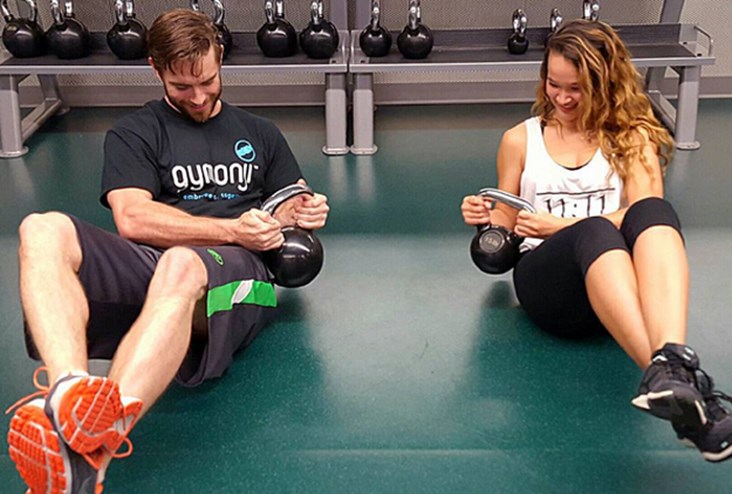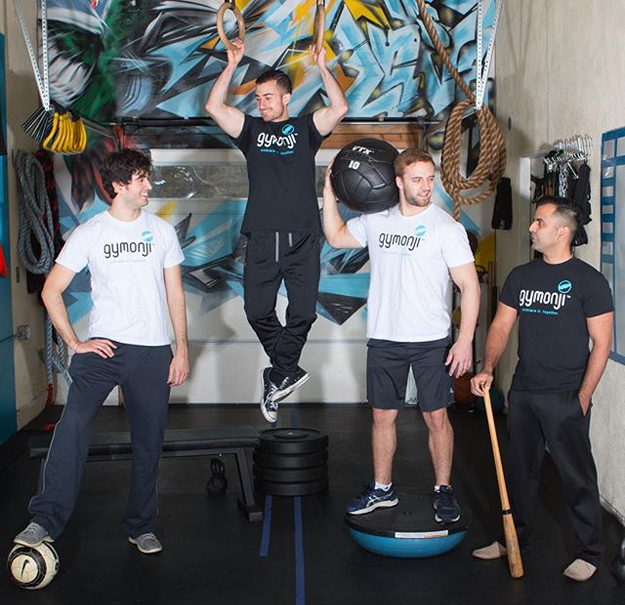
The rise of obesity that began in the late 80s has been accompanied by a parallel increase in the popularity of weight loss regimens and fitness programs. Sugar-free, fat-free, gluten-free, and guaranteed six-pack abs, are only some of the thousands of promises of youthful vim and vigour, and boisterous good health that littered the web.
While health fads came and went, the online fitness industry swelled up significantly to accommodate the increase in demand.
Gymonji is a nascent project in the sector, and is aiming for its share of the pie. The app’s official release on the App Store is scheduled for February 28, 2016 - only 3 days from now.
What’s a Gymonji?
The underlying long-term vision of Gymonji involves a number of services, both hardware and software. For now, the app serves three main functions.
One: people. The app gathers a geo-sensitive social network focused on fitness. It will identify any Gymonji users nearby and connect them to each other. Users can check each other’s profiles and activities, and also communicate with each other. the idea is that users with similar sporting interests could then meet, workout together, or plan activities.
Two: events. The app's content is primarily usaer-generated. The app will also share a list of events in users’ area. These could be major sports events like marathons and the like. Events can be user-generated as well.
Three: professionals. Finally, the app will list professionals trainers nearby.
*Three and a half: workout logs. Currently in the works, but not yet out, the Gymonji team is working on adding a scheduler to the app.
In the Beginning

The idea was concocted by Ryan Makarem in November of 2014. Makarem is a civil engineering graduate from California State Polytechnic University - Pomona. Since graduating, he has worked at Ericsson as a Construction Manager. He is also a certified personal trainer - during his college years, he worked at a number of gyms, including LA Fitness and Gold’s Gym.
During his time at Ericsson, he had the idea for an app that would allow users find a workout partner, a “Tinder for fitness” as he once described it. He talked it over with his friend, James Heidenreich, who quickly jumped on board as COO of the new startup. They initially hired two developers from Berkley and started building the service.
In January of 2015, Makarem was attending a Lebanese New Year’s Gala in Los Angeles. There he serendipitously met the third co-founder, Rawad Hilal, “one of the best programmers in California,” according to Makarem. The two also happened to live one minute away from each other in Orange County, California. Hilal joined the team as Director of Engineering.
Together, the trio worked on maturing the idea and finalizing the design. They bolstered their team with another programmer, Deep Singh, who also invested some money into the project and came on board as Chief Project Manager. More tweaks followed, but by the following August, the idea had stopped changing. In September 2015 the back end was complete.
The Social Network… of Fitness
Working their way up to the launch, Gymonji began operating a blog and various social media channels, with encouraging success.
Their blog, which launched around eleven weeks ago, acts as a channel for the community and publishes guest posts regularly. “News and media is something we’re trying to catch on to,” explained Makarem. The blog has had hundreds of views a week, and each post gathers 1,000+ views. Their Instagram account boasts 10,000 followers.
Reminiscent of Facebook’s early days, the team has also sought to popularize the service using their own network of connections in fraternities and sororities, as well as within the Arab community in California. These early adopters were the first content generators for the app.
Check out this promo video that Gymonji launched 2 months ago:
Planning to Kick It Up a Notch
The app is for both Android and iOS devices. The core services are free, but the Gymonji team has envisioned various ways to monetize the service. Ad revenue, of course, is an obvious option. They will also look to monetize their events features, with sponsored events earning higher visibility. The same applies to professionals listed on the service.
The service is currently available in English; Makarem tells me that localization will depend on the budget, but he assures me that they see it as very important step.
The next step is hardware. “The app is the virtual infrastructure, as it grows, we will build around it,” concluded Makarem.
Latest Business
Intelligence Report














